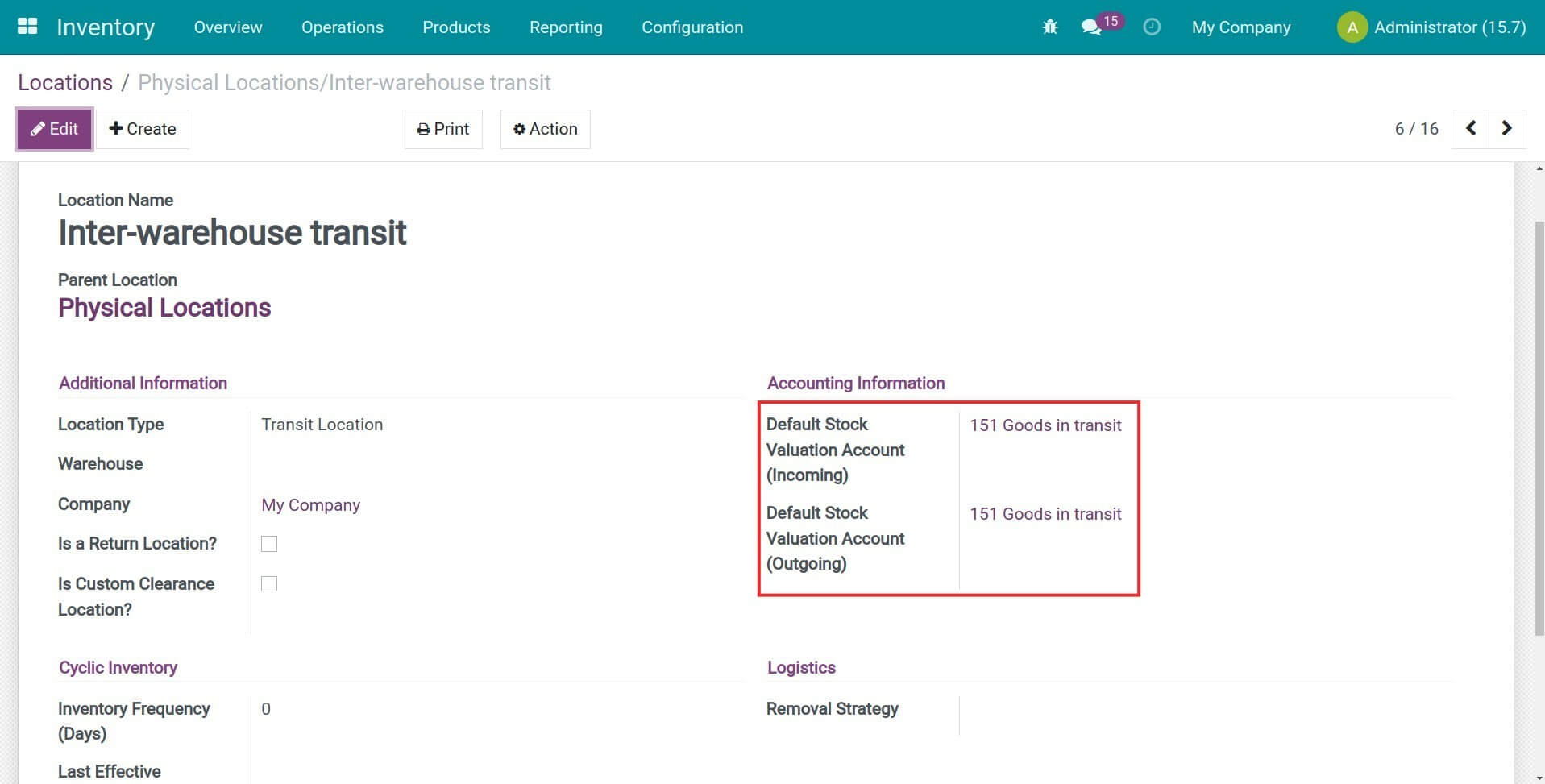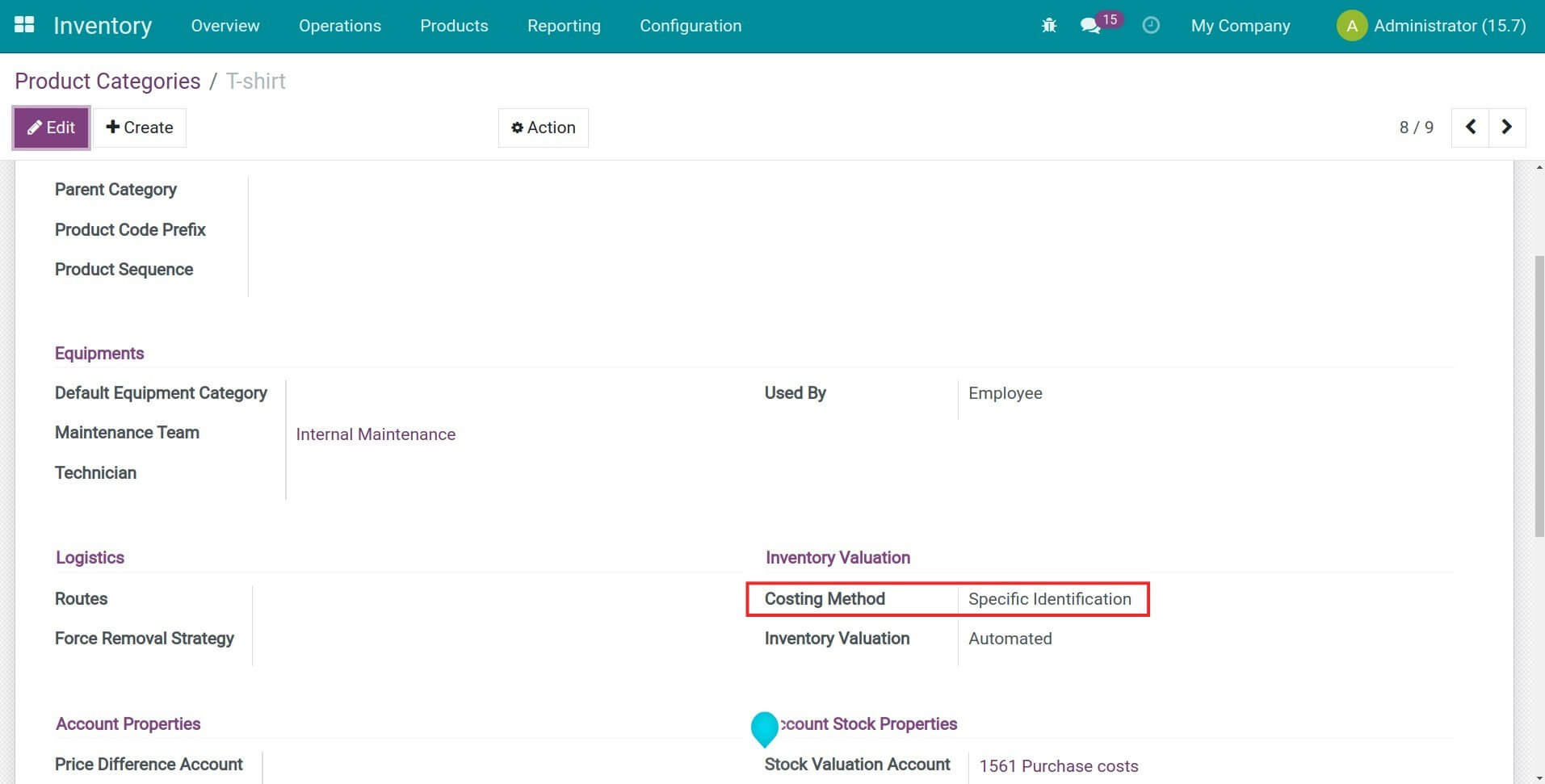Installation
- Navigate to Apps.
- Search with keyword viin_stock_internal_transit_valuation_specific_identification.
- Press Install.
Instructions
Instruction video: Stock Internal Transit Valuation - Specific Identification
Create a warehouse
Navigate to Inventory > Configuration > Warehouses to see the default warehouse automatically created by the system. Press Create to generate another warehouse. Note: You need to select a warehouse on the Resupply From field.
Let's take a look at an example to understand the workflow: Hai Phong Warehouse will be resupplied from Ha Noi Warehouse.
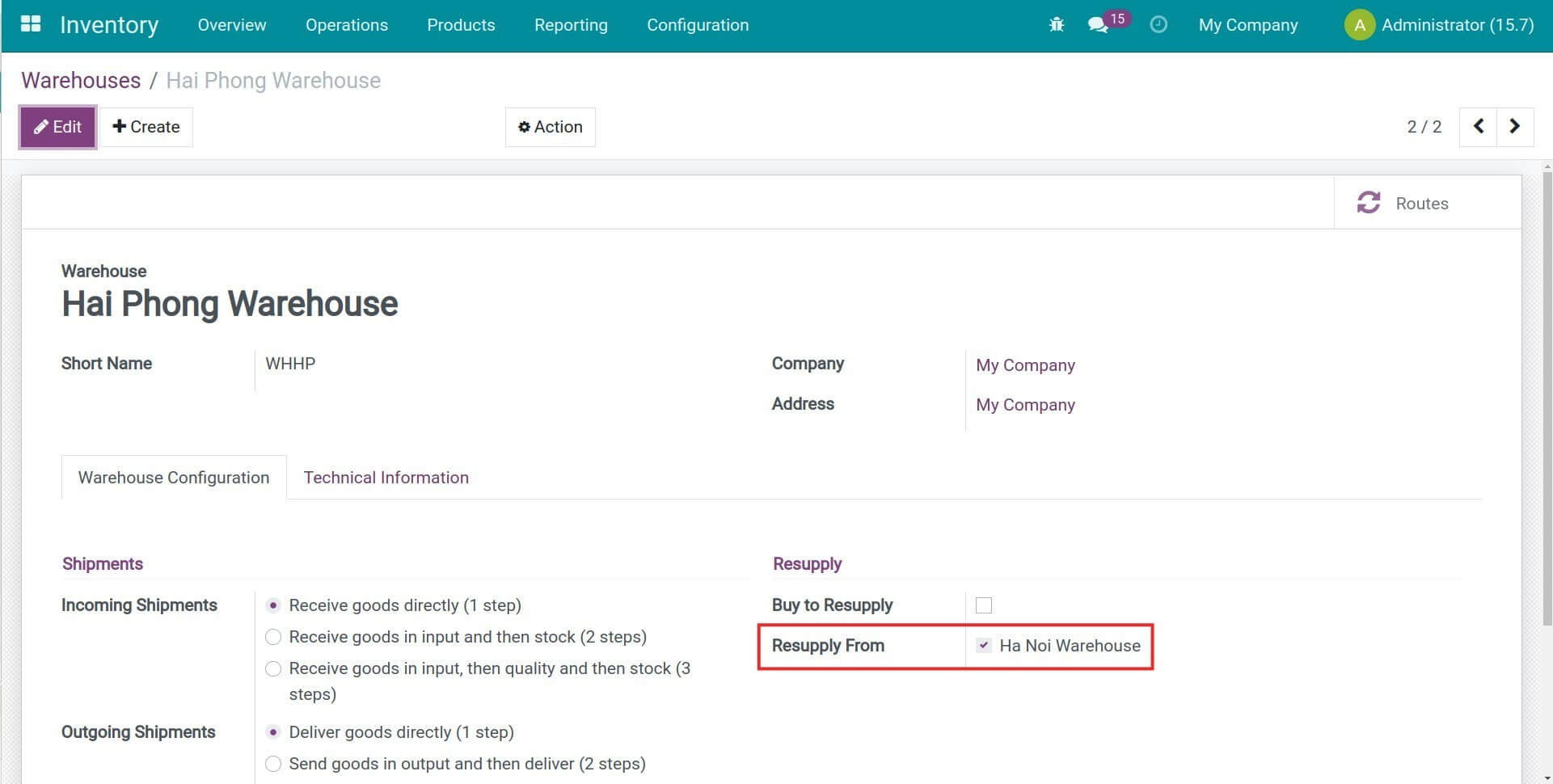
Receive products in the main warehouse
Make sure to have enough stocks in the Ha Noi Warehouse for the resupply route works properly. On the Ha Noi Warehouse receipt, add the Lots/Serial Number then press Validate to receive incoming stocks.
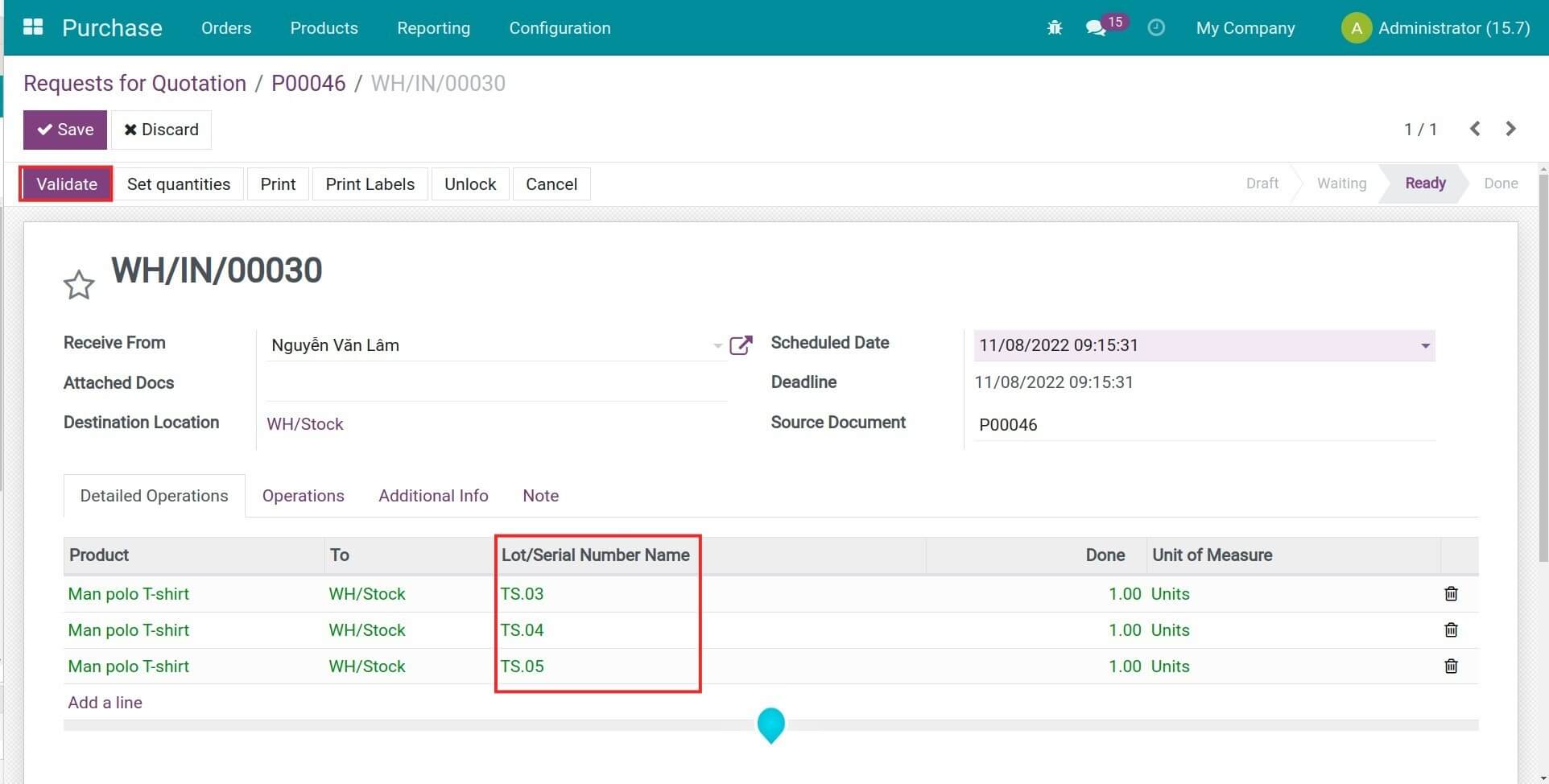
Create a delivery
In the Hai Phong Warehouse, create a delivery for the products received above. In this example, we will create a sales order with delivery from the Hai Phong Warehouse, confirm and check the respective deliveries automatically created.

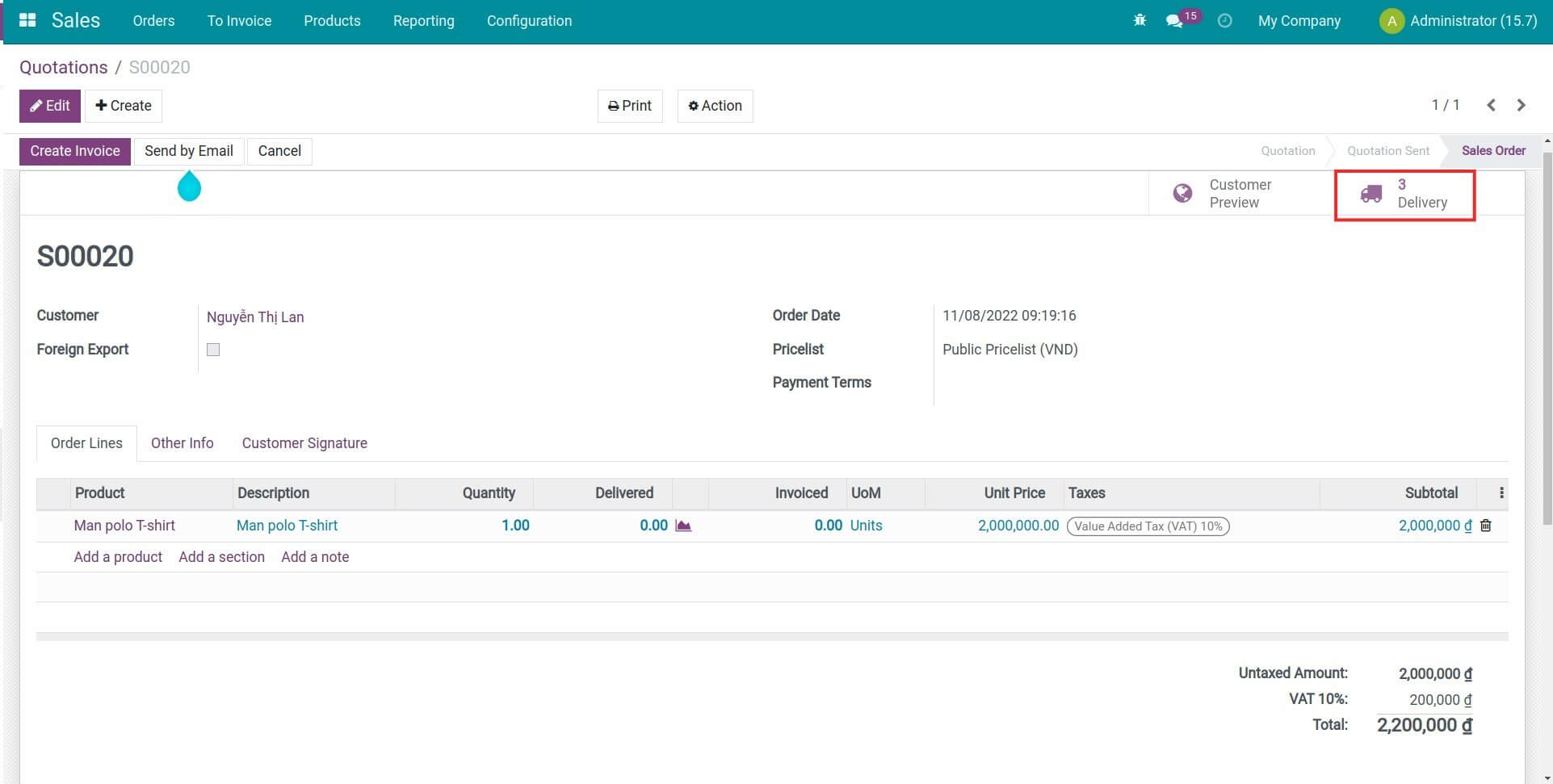
There are 3 deliveries automatically created:
- Transfer 1: From Ha Noi Warehouse to Transit location;
- Transfer 2: From Transit location to Hai Phong Warehouse;
- Transfer 3: From Hai Phong Warehouse to the customer.

You need to validate these deliveries in respective order, following the instructions of the Stock Internal Transit Valuation module. Note: Add the Lot/Serial Number of the product on each delivery.
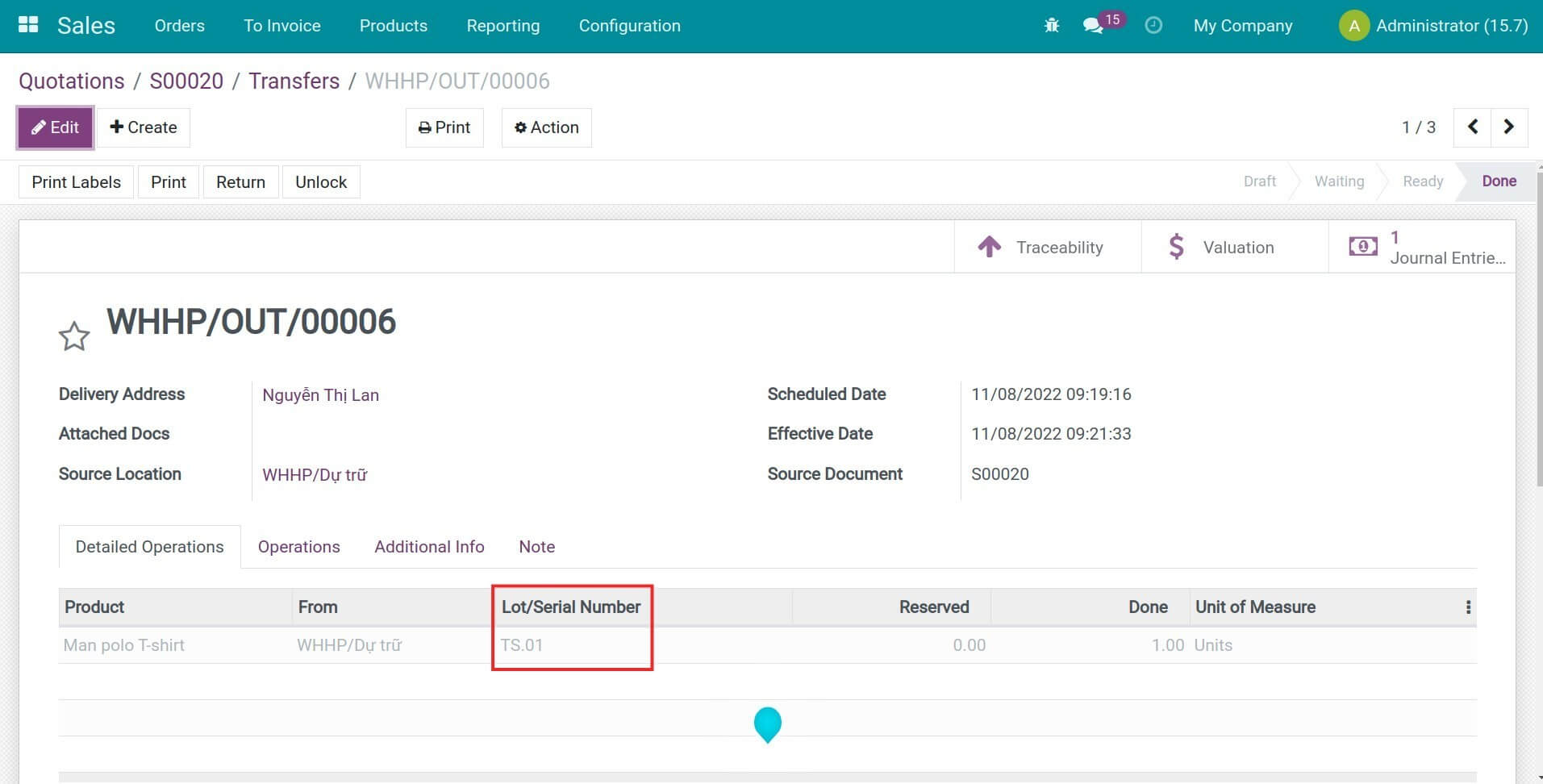
Note:
- You can use the Minimum Stock Rule (MTS) for the workflow above.
- Besides, you can also manually create each delivery instead of using the automatic replenishment order rules created by the software.
This software and associated files (the "Software") may only be
used
(executed, modified, executed after modifications) if you have
purchased a
valid license from the authors, typically via Odoo Apps,
or if you
have
received a written agreement from the authors of the
Software (see the
COPYRIGHT file).
You may develop Odoo modules that use the Software as a library
(typically
by depending on it, importing it and using its
resources), but
without
copying any source code or material from the
Software. You may distribute
those modules under the license of your
choice, provided that this
license
is compatible with the terms of
the Odoo Proprietary License (For
example:
LGPL, MIT, or proprietary
licenses similar to this one).
It is forbidden to publish, distribute, sublicense, or sell
copies of the
Software or modified copies of the Software.
The above copyright notice and this permission notice must be
included in
all copies or substantial portions of the Software.
THE SOFTWARE IS PROVIDED "AS IS", WITHOUT WARRANTY OF ANY KIND,
EXPRESS OR
IMPLIED, INCLUDING BUT NOT LIMITED TO THE WARRANTIES OF
MERCHANTABILITY,
FITNESS FOR A PARTICULAR PURPOSE AND
NONINFRINGEMENT. IN NO EVENT
SHALL THE
AUTHORS OR COPYRIGHT HOLDERS
BE LIABLE FOR ANY CLAIM, DAMAGES OR OTHER
LIABILITY, WHETHER IN AN
ACTION OF CONTRACT, TORT OR OTHERWISE,
ARISING
FROM, OUT OF OR IN
CONNECTION WITH THE SOFTWARE OR THE USE OR OTHER
DEALINGS IN THE
SOFTWARE.


